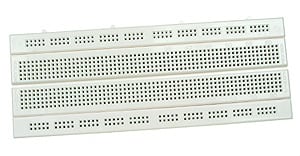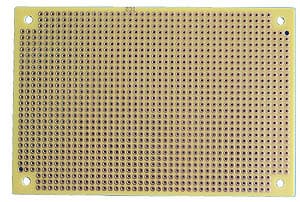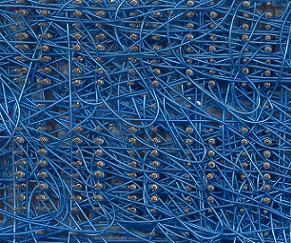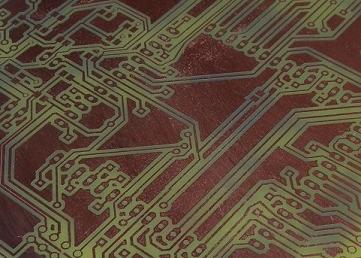If you are starting to take an interest in electronics, this is a good thing to know what type of prototyping boards can be used. There can be four types of prototype boards:
- Solderless breadboard- where connections are made by using jumpers;

- Soldered protoboard- uses soldered jumpers and drilled holes;

- Wire wrap boards – special soldered breadboard or wire wrap board;

- Etched circuit board- requires drawing and etching with chemicals.

What type of proto-board to choose depends on what type of schematic you are prototyping. For instance, it is hard to work with SMT elements using a breadboard, but this problem can be solved using a soldered proto-board. Soldered protoboard takes more time to prepare to compare to solderless, where connections are made by using jumpers. In solderless boards, it is easy to repair mistakes.
Personally, I like breadboards for quick noncomplex prototyping. If my design is more complex and includes SMT elements, then I prefer to use etched boards.






Check out Surfboards:
http://www.capitaladvanced.com/6000ser.htm
I’ve never tried them myself, but it seems like they’d make working with SMDs on breadboards a lot more convenient.
I would bet that “etched” board there isn’t etched, but routed.